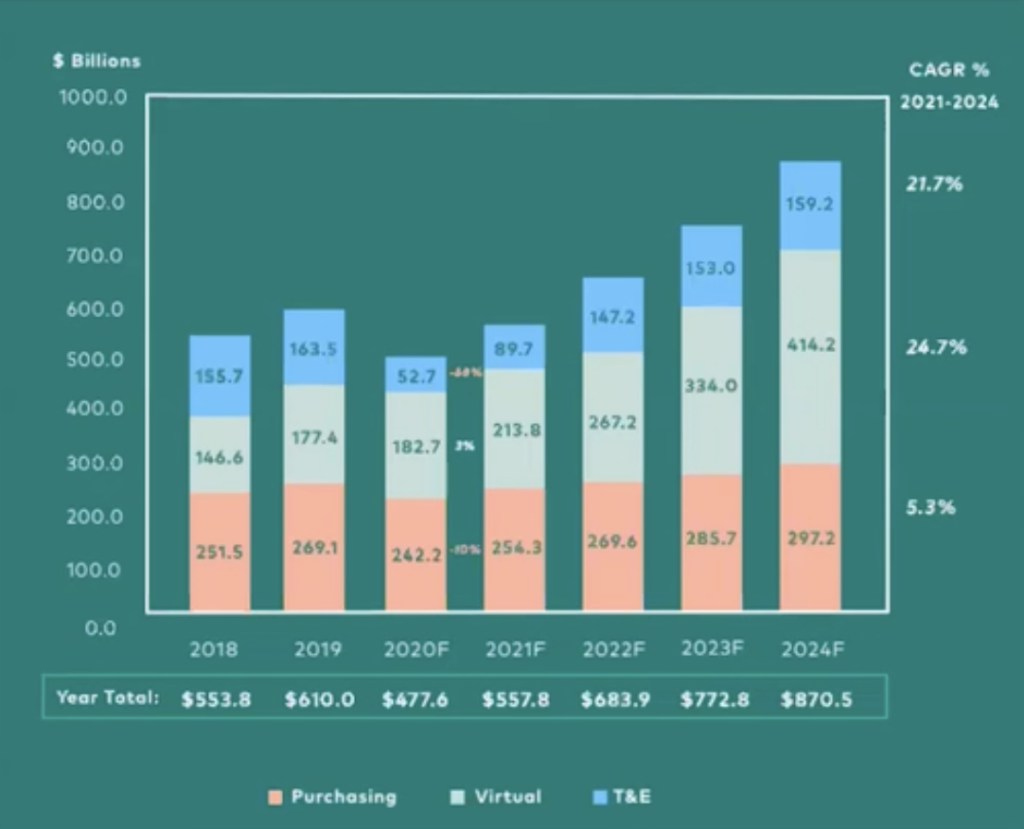How Virtual Cards Merge Policy and Payments
As companies encounter new forms of travel, virtual payment systems (most widely recognized in the form of mobile wallets like Apple Pay and Google Pay) allow companies to merge policy payments, and issue credit cards with a specific value for general expenses, for a fixed amount to be spent on a particular trip, or for a specific purchase or merchant. In addition, these cards can be issued with company policy already embedded in them, so there’s no question about what is an allowable expense.
>> Related: What are Virtual Credit Cards and How to Get One <<
Even though virtual credit cards have been around for some time, the pandemic and subsequent remote working environment laid bare the need to speed adoption. Despite being stuck at home, people still had to make purchases for work and get reimbursed by their companies. This process flow was inefficient at best, and now just plain unnecessary.

But even when the benefits are clear, change management always accompanies technology upgrades. For example, employees like the perks of earning points for airlines and hotels when they travel for work. Many companies have pushed back on virtual cards on those grounds, concerned that their people won’t easily accept the change. The benefit of virtual cards is a balance between policy communication, approvals, and expense reporting that makes life easier for both sides. Reimbursement is a pain for administrators and employees alike, and travelers welcome not having to front their own money.
Remote work requires new muscles for corporate travel and finance departments. Aside from making life easier for employees, virtual cards reinforce compliance, control costs, and track ROI for business travel.



